Introduction to Timer Circuits
An electronic timer circuit is an essential component in many electronic systems and devices. It allows you to control the timing and duration of various operations, such as turning on/off lights, motors, or other components after a predefined time interval. Timer circuits find applications in a wide range of fields, including automation, home appliances, industrial control systems, and more.
In this comprehensive guide, we will delve into the world of electronic timer circuits. We will explore the basic concepts, different types of timer circuits, their working principles, and practical applications. Whether you are an electronics enthusiast, a hobbyist, or a professional, this guide will provide you with the knowledge and insights to understand and implement timer circuits effectively.
Understanding the Basics of Timer Circuits
Before we dive into the specifics of timer circuits, let’s first understand some fundamental concepts that form the foundation of their operation.
What is a Timer Circuit?
A timer circuit is an electronic circuit that generates a specific time delay or controls the duration of an event. It consists of components such as resistors, capacitors, transistors, and integrated circuits (ICs) that work together to create the desired timing functionality.
The primary purpose of a timer circuit is to introduce a time-based control in an electronic system. It allows you to trigger an action or event after a certain time period has elapsed or to maintain an output state for a specific duration.
Key Components of a Timer Circuit
To understand how timer circuits work, it’s essential to familiarize yourself with the key components that make up these circuits. Here are the primary components you’ll commonly find in timer circuits:
- Resistors
- Capacitors
- Transistors
- Integrated Circuits (ICs)
Let’s take a closer look at each of these components and their roles in a timer circuit.
Resistors
Resistors are passive electronic components that oppose the flow of electric current in a circuit. They are used to control the current flow and voltage levels in a timer circuit. Resistors come in different values, measured in ohms (Ω), and are often used in combination with capacitors to determine the timing duration.
Capacitors
Capacitors are electronic components that store electrical energy in an electric field. They consist of two conductive plates separated by an insulating material called a dielectric. In timer circuits, capacitors play a crucial role in determining the timing interval. The charging and discharging of capacitors through resistors create the desired time delay.
Transistors
Transistors are semiconductor devices that can amplify or switch electronic signals. In timer circuits, transistors are often used as switches to control the flow of current. They can be triggered by the charging or discharging of capacitors to turn on or off other components in the circuit.
Integrated Circuits (ICs)
Integrated circuits are miniaturized electronic circuits that contain multiple components, such as transistors, resistors, and capacitors, on a single chip. ICs designed specifically for timing applications, such as the popular 555 timer IC, simplify the construction of timer circuits by providing pre-designed functionality in a compact package.
Timing Concepts
To effectively design and work with timer circuits, it’s important to understand some fundamental timing concepts. Here are a few key terms and concepts related to timing:
- Time Constant
- Delay Time
- Duty Cycle
Time Constant
The time constant (τ) is a measure of the time required for a capacitor to charge or discharge to a certain percentage of its maximum voltage. It is determined by the product of the resistance (R) and capacitance (C) in the circuit.
Time Constant (τ) = Resistance (R) × Capacitance (C)
The time constant is an important parameter in timer circuits as it directly influences the timing duration. By selecting appropriate values for resistors and capacitors, you can achieve the desired time constant and, consequently, the desired timing interval.
Delay Time
Delay time refers to the time interval between the triggering of a timer circuit and the activation or deactivation of the output. It is the period during which the circuit waits before performing a specific action. The delay time is often determined by the time constant and can be adjusted by changing the values of resistors and capacitors in the circuit.
Duty Cycle
Duty cycle is the ratio of the “on” time to the total period of a periodic signal. It is commonly expressed as a percentage. In timer circuits, the duty cycle determines the proportion of time the output is active or inactive within a given period.
Duty Cycle = (On Time ÷ Total Period) × 100%
By controlling the duty cycle, you can adjust the on and off times of the timer circuit’s output, allowing for precise control over the timing of events.
Types of Timer Circuits
Now that we have covered the basics, let’s explore different types of timer circuits commonly used in electronic applications.
Monostable Timer Circuit
A monostable timer circuit, also known as a one-shot timer, generates a single output pulse of a fixed duration in response to an input trigger. Once triggered, the circuit remains in the active state for a predetermined time period and then automatically returns to its stable state.
Here’s a simplified schematic diagram of a monostable timer circuit using a 555 timer IC:
[Monostable Timer Circuit Diagram]
In this circuit, the 555 timer IC is configured in monostable mode. When a trigger pulse is applied to the trigger input (pin 2), the output (pin 3) goes high for a duration determined by the values of the resistor (R) and capacitor (C) connected to the timer IC.
The pulse duration (T) can be calculated using the following formula:
T = 1.1 × R × C
By selecting appropriate values for R and C, you can set the desired pulse duration for your specific application.
Astable Timer Circuit
An astable timer circuit, also known as a free-running or oscillator circuit, continuously generates a square wave output without any external trigger. It alternates between two states (high and low) at a fixed frequency determined by the circuit components.
Here’s a simplified schematic diagram of an astable timer circuit using a 555 timer IC:
[Astable Timer Circuit Diagram]
In this configuration, the 555 timer IC is set up as an astable multivibrator. The output (pin 3) continuously oscillates between high and low states, generating a square wave signal. The frequency and duty cycle of the output are determined by the values of the resistors (R1 and R2) and the capacitor (C) connected to the timer IC.
The frequency (f) of the output can be calculated using the following formula:
f = 1.44 ÷ ((R1 + 2R2) × C)
By adjusting the values of R1, R2, and C, you can control the frequency and duty cycle of the astable timer circuit’s output.
Programmable Timer Circuit
A programmable timer circuit allows you to set and adjust the timing parameters using external inputs or digital control. These circuits often incorporate microcontrollers or programmable logic devices to provide flexibility and precise control over the timing intervals.
Here’s a simplified block diagram of a programmable timer circuit:
[Programmable Timer Circuit Block Diagram]
In a programmable timer circuit, the microcontroller or programmable logic device receives input signals or commands to set the desired timing parameters. It then generates control signals to trigger and control the timing operation of the circuit.
The advantages of programmable timer circuits include:
- Flexibility: The timing intervals can be easily modified by changing the programming or input parameters.
- Precision: Microcontrollers and programmable logic devices offer high precision and accuracy in timing control.
- Customization: The timer circuit can be tailored to specific application requirements by modifying the programming.
Programmable timer circuits find applications in complex systems where timing control needs to be dynamically adjusted or synchronized with other operations.

Applications of Timer Circuits
Timer circuits find a wide range of applications across various domains. Here are a few notable examples:
- Home Automation
- Industrial Control Systems
- Automotive Electronics
- Lighting Control
- Appliance Control
Let’s explore each of these applications in more detail.
Home Automation
In home automation systems, timer circuits play a crucial role in controlling various devices and appliances. They can be used to:
- Turn lights on and off at specific times or intervals
- Control the operation of fans, heaters, or air conditioners based on predefined schedules
- Automate the watering of plants or the feeding of pets
- Trigger security systems or alarms at specific times
Timer circuits in home automation systems provide convenience, energy efficiency, and enhanced control over the living environment.
Industrial Control Systems
Timer circuits are extensively used in industrial control systems to regulate and synchronize various processes. Some common applications include:
- Controlling the timing of conveyor belts or production lines
- Implementing time-based safety interlocks in machinery
- Triggering alarms or notifications at specific intervals
- Coordinating the operation of multiple devices or systems
Timer circuits ensure precise timing and synchronization, which is critical for the smooth and efficient operation of industrial processes.
Automotive Electronics
In the automotive industry, timer circuits find applications in various electronic systems within vehicles. Some examples include:
- Controlling the duration of interior lights or courtesy lamps
- Implementing time-based functions in power windows or sunroofs
- Regulating the operation of windshield wipers or headlights
- Managing the timing of engine control systems
Timer circuits in automotive electronics enhance safety, convenience, and energy efficiency while providing a better driving experience.
Lighting Control
Timer circuits are widely used in lighting control applications to automate and regulate lighting systems. Some common use cases include:
- Controlling the on/off timing of street lights based on daylight conditions
- Implementing time-based dimming or color-changing effects in decorative lighting
- Triggering emergency lighting or exit signs during power outages
- Managing the lighting in public spaces, such as parks or stadiums
Timer circuits in lighting control systems help conserve energy, enhance safety, and create visually appealing lighting environments.
Appliance Control
Timer circuits are commonly found in various household appliances to control their operation and provide convenience to users. Some examples include:
- Implementing delay start or auto-off functions in washing machines or dryers
- Controlling the defrost cycle in refrigerators or freezers
- Regulating the brewing time in coffee makers
- Managing the cooking duration in microwave ovens or electric ovens
Timer circuits in appliances offer users flexibility, energy efficiency, and precise control over the appliance’s operation.
Designing Timer Circuits
Designing timer circuits involves several key considerations and steps. Here’s a general approach to designing a timer circuit:
- Determine the Timing Requirements
- Identify the desired timing interval or duration
- Consider the accuracy and precision needed for the application
-
Determine if a monostable, astable, or programmable timer circuit is suitable
-
Select the Appropriate Timer IC or Components
- Choose a timer IC (e.g., 555 timer) or discrete components based on the timing requirements
- Consider factors such as supply voltage, current consumption, and package type
-
Review the datasheet and application notes for the selected components
-
Calculate Component Values
- Use the timing formulas specific to the chosen timer configuration
- Determine the values of resistors and capacitors to achieve the desired timing interval
-
Consider the tolerance and stability of the components over temperature and time
-
Design the Circuit Schematic
- Create a schematic diagram of the timer circuit
- Include the timer IC or discrete components, along with the necessary resistors, capacitors, and other supporting components
-
Ensure proper connections and pin assignments according to the datasheet
-
Simulate and Test the Circuit
- Use simulation software (e.g., SPICE) to verify the circuit’s functionality and timing behavior
- Build a prototype of the timer circuit on a breadboard or PCB
-
Test the circuit with various input conditions and measure the output waveforms using an oscilloscope
-
Optimize and Refine the Design
- Analyze the simulation and test results to identify any issues or areas for improvement
- Adjust component values or circuit topology to achieve the desired performance
-
Consider factors such as power consumption, noise immunity, and reliability
-
Create the PCB Layout
- Design the printed circuit board (PCB) layout for the timer circuit
- Follow best practices for component placement, trace routing, and grounding
-
Ensure proper spacing and clearance between components and traces
-
Fabricate and Assemble the PCB
- Generate the PCB Fabrication files (e.g., Gerber files) and send them to a PCB manufacturer
- Assemble the components on the fabricated PCB, either manually or using automated assembly techniques
-
Perform a visual inspection and electrical tests to verify the assembled PCB
-
Integrate and Test the Timer Circuit
- Integrate the timer circuit into the target application or system
- Perform comprehensive testing to validate the functionality, reliability, and robustness of the timer circuit
- Verify that the timer circuit meets the specified requirements and operates as intended
Designing timer circuits requires a combination of theoretical knowledge, practical skills, and attention to detail. It’s essential to follow best practices, adhere to safety guidelines, and thoroughly test and validate the circuit before deploying it in real-world applications.
Troubleshooting Timer Circuits
Despite careful design and testing, issues may arise in timer circuits during operation. Troubleshooting timer circuits involves a systematic approach to identify and resolve problems. Here are some common issues and troubleshooting techniques:
- Inaccurate Timing
- Verify the component values (resistors and capacitors) and ensure they match the calculated values
- Check for any variations in the supply voltage, as it can affect the timing accuracy
-
Consider the tolerance and stability of the components and how they may change over temperature and time
-
No Output or Unexpected Output
- Check the power supply and ensure it is providing the correct voltage to the timer circuit
- Verify the connections and ensure there are no short circuits or open connections
-
Review the datasheet and application notes to confirm the correct pin assignments and configuration
-
Noise or Glitches in the Output
- Use decoupling capacitors near the power supply pins of the timer IC to reduce noise
- Ensure proper grounding and shielding techniques to minimize electromagnetic interference (EMI)
-
Consider adding pull-up or pull-down resistors on the input and output pins to improve signal integrity
-
Inconsistent or Erratic Behavior
- Check for any loose or intermittent connections in the circuit
- Verify that the components are within their rated specifications and not damaged or degraded
-
Monitor the supply voltage and ensure it remains stable during operation
-
Overheating or Excessive Power Consumption
- Ensure that the components are rated for the expected current and power dissipation
- Check for any short circuits or excessive loading on the output of the timer circuit
- Consider adding heat sinks or improving ventilation to dissipate heat effectively
When troubleshooting timer circuits, it’s essential to use appropriate test equipment, such as multimeters and oscilloscopes, to measure voltages, currents, and waveforms accurately. Systematic problem-solving, careful observation, and logical reasoning are key to identifying and resolving issues effectively.
Frequently Asked Questions (FAQ)
-
Q: What is the purpose of a timer circuit?
A: The purpose of a timer circuit is to introduce a time-based control in an electronic system. It allows you to trigger an action or event after a certain time period has elapsed or to maintain an output state for a specific duration. -
Q: What are the key components of a timer circuit?
A: The key components of a timer circuit include resistors, capacitors, transistors, and integrated circuits (ICs). Resistors control the current flow, capacitors store electrical energy and determine timing intervals, transistors act as switches, and ICs provide pre-designed timing functionality. -
Q: How do I calculate the timing duration in a monostable timer circuit?
A: In a monostable timer circuit using a 555 timer IC, the pulse duration (T) can be calculated using the formula: T = 1.1 × R × C, where R is the value of the resistor and C is the value of the capacitor connected to the timer IC. -
Q: What is the difference between a monostable and an astable timer circuit?
A: A monostable timer circuit generates a single output pulse of a fixed duration in response to an input trigger, while an astable timer circuit continuously generates a square wave output without any external trigger. Monostable circuits are used for one-shot timing, while astable circuits are used for continuous oscillation. -
Q: What are some common applications of timer circuits?
A: Timer circuits find applications in various domains, including home automation (controlling lights, appliances), industrial control systems (regulating processes, safety interlocks), automotive electronics (controlling interior lights, windshield wipers), lighting control (street lights, decorative lighting), and appliance control (delay start, auto-off functions).
Conclusion
In this comprehensive guide, we explored the world of electronic timer circuits. We covered the basics of timer circuits, including their purpose, key components, and timing concepts. We delved into different types of timer circuits, such as monostable, astable, and programmable timers, and discussed their working principles and applications.
We also looked at the design process for timer circuits, including determining timing requirements, selecting appropriate components, calculating component values, and creating circuit schematics. Troubleshooting techniques for common issues in timer circuits were also discussed to help you diagnose and resolve problems effectively.
Timer circuits play a crucial role in various electronic systems and applications, providing precise timing control and enabling automated and synchronized operations. By
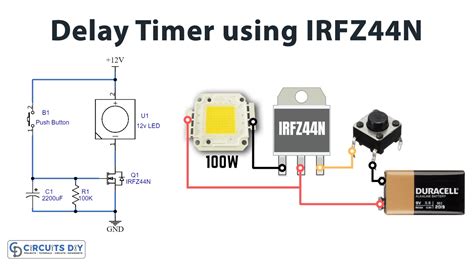

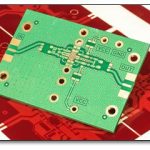
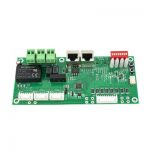
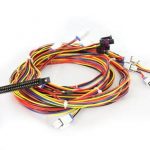
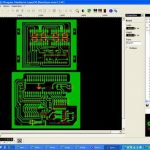
Leave a Reply